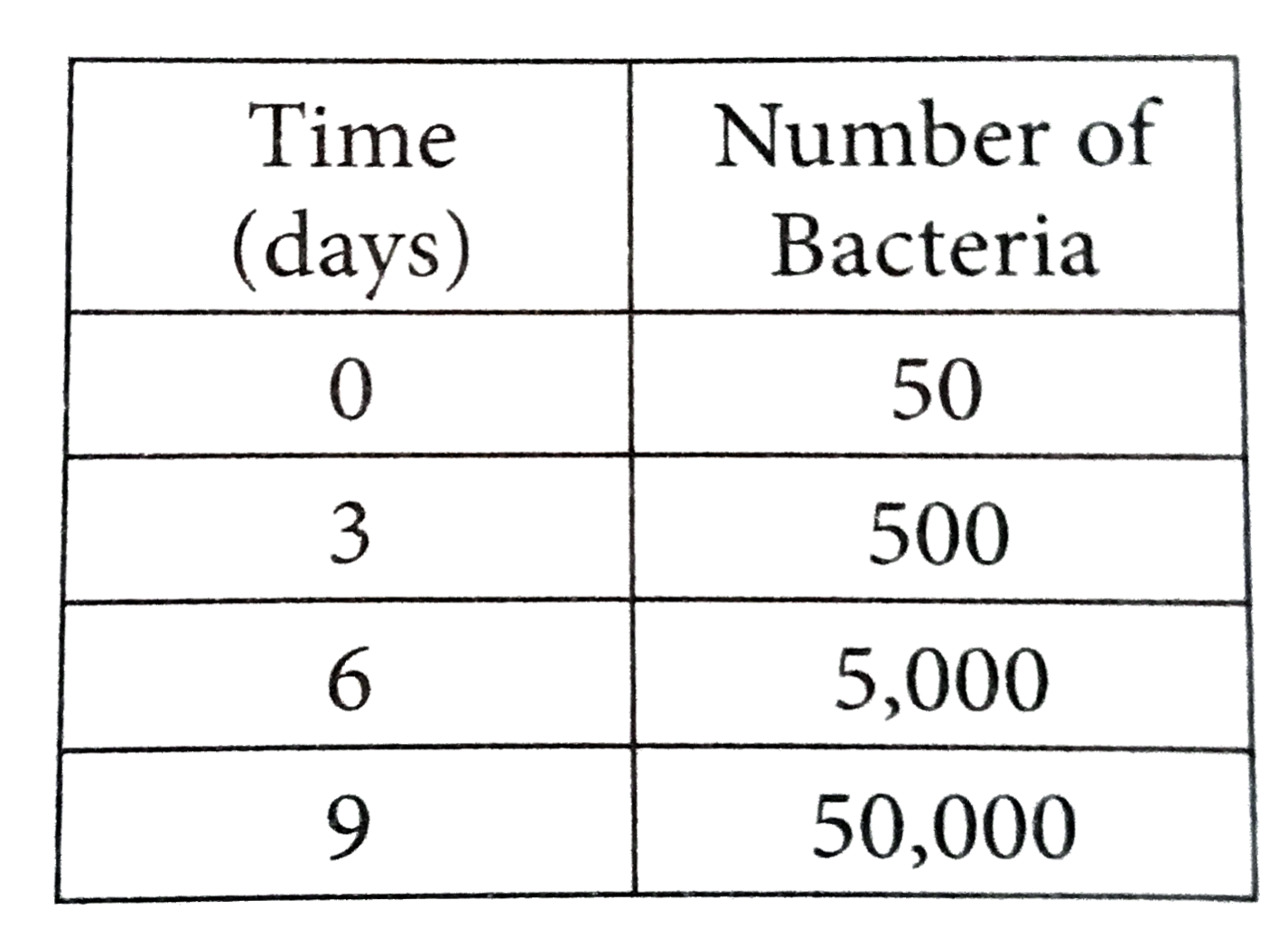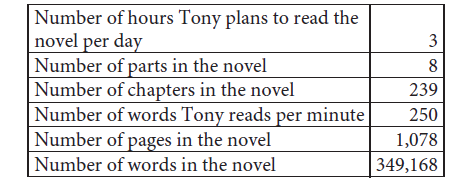As part of a laboratory experiment, the number of times a light id flashed on a certain culture of bacteria is reduced 20 percent each day. If the light flashed 704 times on the fourth day of the experiment, then the number of times it flashed on the first day is closest to
880
The correct Answer is:D
The key insight here is to notice that when 20% of the flashes are removed, 80% remain. Call the number of flashes on the first day F. Then the number of flashes on the second day is . On the third day, the number is 80% or of of F - which you can express more simply as . Similarly, on the fourth day, the number of flashes is . You're given that the number, of flashes on the fourth day is 704, so . If , then . Use your calculator : .
Topper's Solved these Questions
- BOOK - KAPLANCHAPTER - MISCELLANEOUS TOPICS EXERCISE - MISCELLANEOUS TOPICS FOLLOW - UP TEST12videos
MISCELLANEOUS TOPICS
- BOOK - KAPLANCHAPTER - MATH TEST-01EXERCISE - Multiple Choice Question20videos
MATH TEST-01
- BOOK - KAPLANCHAPTER - PLANE GEOMETRY EXERCISE - PLANE GEOMETRY FOLLOW - UP TEST6videos
PLANE GEOMETRY
Similar Questions
In a certain culture the number of bacteria at any instant increases at a rate proportional to the cube root of the number present at that instant. If the number becomes 8 times in 3 hours, when will the number be 64 times?
View SolutionThe first experiment on photosynthesis in flashing light were carried out by
View Solution
Knowledge Check
- Question 1 - Select One
The number of bactria in a colony is estimated over the course of 9 days, as shown in the table below.

Which of the following best describes the relationship between time and the estimated number of bacteria over these 9 days?ALinear decreaseBLinear increaseCExponential decayDExponential growth - Question 2 - Select One
A biologist was interested in the number of times a field cricket chirps each minute on a sunny day. He randomly selected 100 field crickets from a garden, and found that the mean number of chirps per minute was 112, and the margin of error for this estimate was 6 chirps. The bilogist would like to repeat the procedure and attempt to reduce the margin of error. Which of the following samples would most likely result in a smaller margin of error for the estimated mean number of times a field cricket chirps each minute on a sunny day?
A50 randomly selected crickets from the same garden.B50 randomly selected field crickets from the same garden.C200 randomly selected from the same garden.D200 randomly selected field crickets from the same garden. - Question 3 - Select One
The number of square units, A, in the area covered by a bacteria culture is increasing at a rate of 20% every 7 days. If the bacteria culture initially covers an area of 10 square centimeters, which equation can be used to find the number of square units in the area covered by the bacteria culture after d days?
AA=10(1.20)d7BA=10(1.20)7dCA=10(0.80)d7DA=(12)7d
The rate of increase in the number of bacteria in a certain bacteria culture is proportional to the number present. Given the number triples in 5 hrs., find how many bacteria will be present after 10 hours. Also find the time necessary for the number of bacteria to be 10 times the number of initial present. [Given loge3=1.0986, e2.1972=9 ]
View SolutionA saample of radioactive elements contains 4×1010 active nuclei. If half-life of element is 10 days, then the number of decayed nuclei after 30 days is
View SolutionA saample of radioactive elements contains 4×1016 active nuclei. If half-life of element is 10 days, then the number of decayed nuclei after 30 days is
View SolutionAs accident in a nuclear laboratory resulting in deposition of a certain amount of radioactive material of half life 18days inside the laboratory Tests revealed that the radiation was 64 times more than the permissible level required for save operation of the laboratory what is the minimum number of days after which the laboratory can be considered safe for use?
View Solution
Tony is planning to read a novel. The table above shows information about the novel, Tony’s reading speed, and the amount of time he plans to spend reading the novel each day. If Tony reads at the rates given in the table, which of the following is closest to the number of days it would take Tony to read the entire novel?View Solution

